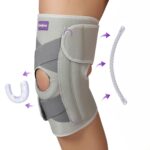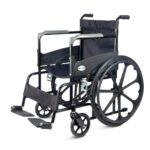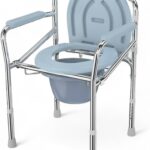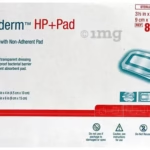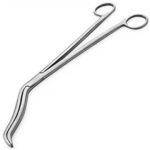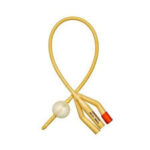Minimally Invasive Surgery vs. Traditional Surgery: What’s Better for You?

When it comes to surgery, one of the most important decisions patients and healthcare providers must make is the type of procedure to choose. In recent years, minimally invasive surgery (MIS) has become increasingly popular as an alternative to traditional open surgery. Both approaches have their benefits and limitations, and understanding the differences between them can help you make an informed decision about which is better suited to your needs. In this blog post, we’ll compare minimally invasive surgery and traditional surgery to help you determine which option may be right for you.
What is Minimally Invasive Surgery?
Minimally invasive surgery is a modern technique that involves making small incisions or using natural body openings to access the area being treated. Rather than performing a large incision, surgeons use specialized tools, such as endoscopes, laparoscopes, and robotic systems, to carry out the surgery with precision and minimal disruption to the body. The surgeon may use a camera to guide the procedure, allowing them to view the inside of the body on a screen while performing the surgery.
Common types of minimally invasive surgery include:
- Laparoscopic Surgery: Often used for abdominal procedures, such as gallbladder removal or hernia repair.
- Endoscopic Surgery: Used for surgeries involving the gastrointestinal tract, such as colonoscopy or sinus surgery.
- Robotic Surgery: A highly precise form of surgery where a robotic system assists the surgeon in performing the operation.
Advantages of Minimally Invasive Surgery
- Smaller Incisions and Less Scarring
Because MIS uses small incisions, it results in less tissue disruption and generally leaves smaller scars. This can be particularly appealing for patients concerned about cosmetic outcomes. - Shorter Recovery Times
One of the major benefits of minimally invasive surgery is a faster recovery. Since the incisions are smaller and there is less trauma to the body, patients can usually go home sooner and resume normal activities much faster than with traditional surgery. - Reduced Pain and Bleeding
Smaller incisions generally lead to less bleeding, and many patients report less postoperative pain. This translates to a decreased need for pain medications and a lower risk of complications. - Lower Risk of Infection
With smaller incisions, there is less exposure to the outside environment, reducing the likelihood of infection. - Less Hospital Time
Many MIS procedures can be done on an outpatient basis, meaning you may not need to stay in the hospital overnight. This can reduce both your risk of hospital-acquired infections and the overall cost of care.
Disadvantages of Minimally Invasive Surgery
- Not Suitable for Every Case
Some surgeries, particularly those involving large tumors or complicated procedures, may still require traditional open surgery for optimal results. - Longer Surgical Times
MIS can sometimes take longer to perform than traditional surgery due to the need for precision and the limitations of the small incisions. However, this depends on the surgeon’s skill and the complexity of the procedure. - Specialized Equipment and Training
Not all hospitals have access to the advanced equipment required for MIS, and the surgeons need to undergo specialized training. This means that in some cases, you may not have access to minimally invasive options, especially if you live in an area with limited medical resources.
What is Traditional Surgery?
Traditional or open surgery involves making large incisions to directly access the area being treated. While this method has been used for centuries and remains the standard for many complex operations, it comes with a higher risk of complications compared to minimally invasive techniques.
Advantages of Traditional Surgery
- Better Access for Complex Procedures
Some surgeries, such as those for larger tumors or complicated organ conditions, may require open surgery to provide the surgeon with better access and visibility to perform the procedure safely and effectively. - More Versatile for Emergency Situations
In urgent or emergency scenarios, traditional surgery may be the more reliable option, particularly when time is of the essence, and minimally invasive options may not be feasible. - More Established Technique
Traditional surgery has been around for centuries and has a well-documented track record. Surgeons are often more comfortable with the method because they have extensive experience.
Disadvantages of Traditional Surgery
- Larger Incisions and Scarring
Traditional surgery typically involves large cuts to the skin, leading to more visible scars, longer healing times, and a higher risk of wound complications like infection. - Longer Recovery Period
Because the body experiences more trauma from larger incisions, recovery after open surgery is usually longer. This means more time in the hospital, more postoperative care, and a longer time away from work or normal activities. - Increased Risk of Infection and Bleeding
With open surgery, there is more exposure of internal organs to the outside environment, which increases the likelihood of infection. Additionally, larger incisions can result in more blood loss during the operation. - More Pain and Discomfort
Recovery from traditional surgery tends to involve more pain and discomfort, as the body needs time to heal from the larger wound. Pain management may be required for a longer period of time compared to minimally invasive surgery.
Which Option is Right for You?
The decision between minimally invasive surgery and traditional surgery depends on several factors, including the type of condition being treated, the complexity of the procedure, and your overall health.
When Minimally Invasive Surgery is a Good Option:
- Simple to Moderate Conditions: For conditions like hernias, gallbladder removal, and certain types of colon surgery, minimally invasive surgery can offer a safer, faster recovery with less discomfort.
- Cosmetic Concerns: If you’re concerned about scarring or the aesthetic outcome, MIS may be a better choice due to its smaller incisions.
- Faster Recovery Needed: If you have a busy schedule or need to get back to work quickly, MIS can shorten recovery time.
When Traditional Surgery May Be Necessary:
- Complex Procedures: If your condition involves a large tumor, extensive tissue removal, or complex anatomical challenges, traditional surgery might be the more reliable approach.
- Emergency Situations: In cases where quick, decisive intervention is necessary, open surgery may be the best course of action.
- Inexperienced with MIS: If your surgeon is not familiar with the latest minimally invasive techniques or the technology is unavailable, traditional surgery might be the safer option.
Conclusion
Minimally invasive surgery has revolutionized many aspects of modern healthcare, offering patients the benefits of smaller scars, shorter recovery times, and less pain. However, it’s not the right choice for everyone or every condition. Traditional surgery remains essential for more complex cases and when immediate action is needed. When deciding on the best option, consult with your healthcare provider to assess your individual needs, the specific surgery required, and the benefits and risks associated with each approach. The ultimate goal is to ensure the best outcome for your health and well-being.
Have you or someone you know recently had to decide between the two types of surgery? What factors did you consider most important in making the decision? Feel free to share your thoughts or questions in the comments below!

 My Account
My Account
